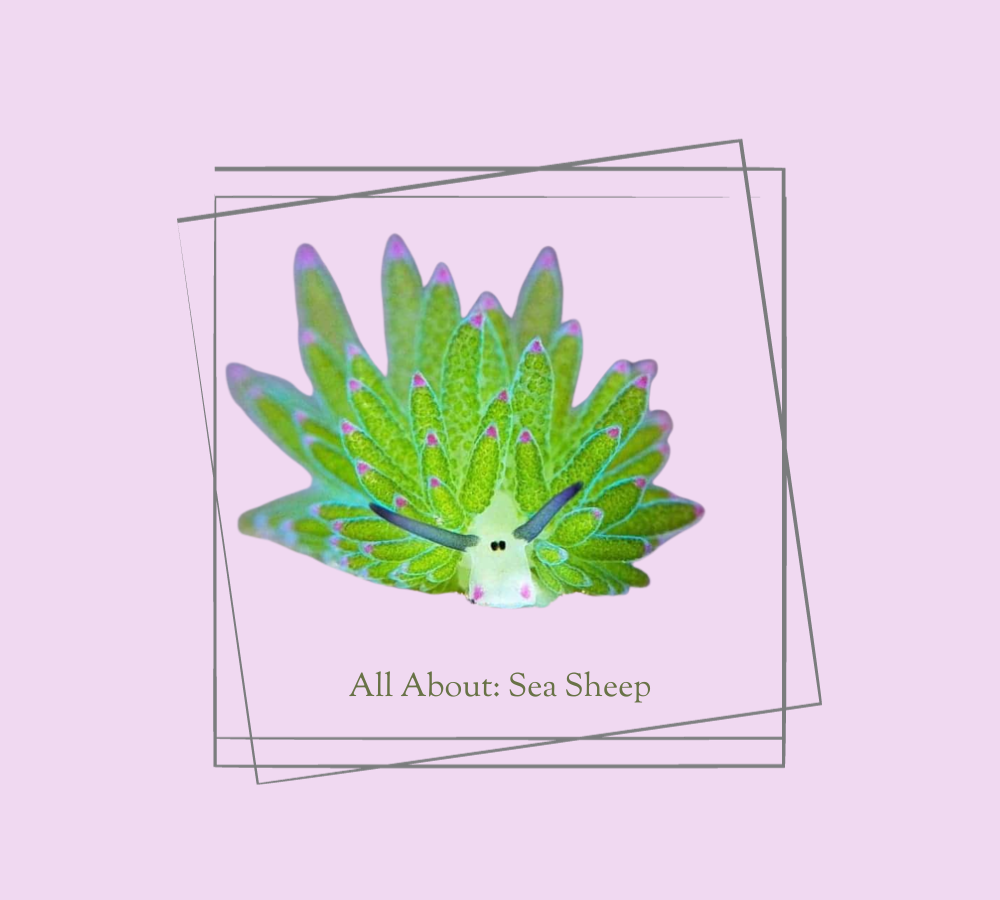With a tiny body covered in succulent leaves and the face of a sheep, sea sheep are one of the cutest sea slugs in the ocean out of the 2,000 different species.
Sea sheep, also known as leaf slugs, bunny slugs, salty ocean caterpillars, “Shaun the Sheep” by many divers in the Philippines or their scientific name, Costasiella kuroshimae, are a species of sacoglossan sea slugs. They are one of the few animals in the world that can perform photosynthesis with the energy produced through kleptoplasty providing 9 months of energy without food.
“People are captivated by the leaf sheep because it has a cute face and an interesting shape,” Terrence Gosliner, senior curator of invertebrate zoology and geology at the California Academy of Sciences and a sea slug expert from bbc.com, said. “They’re just great little slugs.”
These underwater animals resemble aloe vera and other succulents with horn-looking rhinophores that wiggle underwater which help the sea slug smell algae and other organisms around them. Their rhinophores also have small fine hairs that help smell toxic chemicals in the water to keep them out of danger. The slow-moving creatures have foot-like appendages that propel them through water. Sea sheep weigh around 100 grams and their one-fourth-inch body can lay comfortably across the pad of a child’s fingertip.
“The first time I saw Shaun the Sheep in Romblon (in the Philippines), I was surprised by how tiny it was,” Ara Juan, an avid diver and ocean advocate from bbc.com, said. “The second time in Dauin, Negros Oriental, was more exciting- I saw five of them perched on a leaf, so it looked like they were grazing on a field of algae.”
These creatures are found in the waters surrounding Japan, Indonesia and the Philippines and difficult to find elsewhere. They originated in Kuroshima, Japan, in 1993 and because of that recent discovery their lifespan remains unknown, but some scientists speculate them to live around 6-12 months. They live on Avrainvillea, a short fuzzy type of algae that grows in areas with soft substrates like fine sand. The algae they live on provides camouflage (cryptic coloration) and hides them from predators like fish, birds, sea otters and seals.
“They’re not found in coral reefs but in areas next to coral reefs,” Gosliner said. “The leaf sheep spends its whole life on that species of algae, and you can often see a whole colony of them there. I’ve seen up to 15 or 20 on one blade of alga. Sometimes you can see the egg mass of the slug, which are tiny spiral coils.”
Categories:
New Creature to Explore – Sea Sheep
Hannah Hunter, Assistant Editor
October 26, 2023
About the Contributor

Hannah Hunter, Head Editor
Hi I’m Hannah! I’m really excited to be the Head Editor of Newspaper this year!

